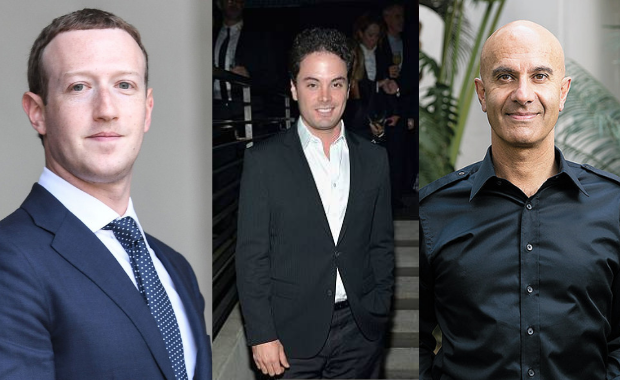Entrepreneurs
How to Work Without Working: 3 Lessons From Three Successful Entrepreneurs

We want to build business empires, amass a huge amount of wealth, and become a worldwide sensation. Yet, we hate to work hard and show up every day to grind. We simply dread working, but we love the results that our work produces.
What if there’s a formula for working without getting bored with doing the work? In other words, you’re working but you’re not feeling the brunt of the process. Drawing from the experience and expertise of three successful entrepreneurs, below, I give you the three tips for working without actually feeling the stress of working.
1. Mark Zuckerberg: Get moving with the easiest tasks
For the average person, working is something huge—like running a marathon or climbing Mount Everest. Most amateur entrepreneurs and career people often spend weeks preparing for a simple task. And when it’s time to do that task, they’ll end up accomplishing only 30 percent of the work. The other 70 percent is buried in “preparation” or procrastination.
But it shouldn’t have to be so. Work should be fun. Mark Zuckerberg never spends 24 hours preparing for work. The young, smart founder of Facebook developed a simple formula for accomplishing any type of work without feeling its impact.
He always begins with the easiest tasks, as opposed to the difficult ones. “I think a simple rule of business is, if you do the things that are easier first, then you can actually make a lot of progress.” That’s a smart philosophy for a Silicon Valley superstar.
If you start with that simple project, you’ll feel a sense of accomplishment. You motivate yourself to get going. You won’t feel the burden of the work.
2. Sean Lourdes: Be generous
Making more money appears to be the first goal of most career and business people. But it shouldn’t be. That’s because “If you’re too much obsessed with amassing wealth, making more profit, selling all your inventories, that will make your entrepreneurial career boring, burdensome, and tedious”, Sean Lourdes, founder of The Lourdes Foundation, observes.
The better way to make your entrepreneurial career fun and exciting is to give more. Struggle to work hard and make more money, but don’t make the money as your end goal. You’re meant to serve your customers. That should be your end goal. And being generous will help you serve them better and, in turn, helps you make more money along the way.
Just begin to give more than you take—whether it’s delivering more value to your customers, giving more discounts than the buyer asks, or simply donating your personal wealth to charity organizations—and notice how you’ll find meaning in your work, career, and life in general.
3. Robin Sharma: See your work as a craft
It amazes me when I visit a hotel and the person at the front desk barely raises their head to look at me. I always ask myself: Why would anyone be in the hospitality industry when it’s obvious that they hate people?
If you’re not fit in an industry but insist on working in it, you’ll not only find peace in your work-life, but you’ll also be at war with your employer’s customers. Unfortunately, most people work at jobs they hate. In other words, they see their work as work, not as a craft—which they’ll passionately harness to satisfy their clients. The productivity guru Robin Sharma argues that “a job is only a job if you see it as a job.”
And if you see your job as a job, you can’t find value and meaning and passion in what you do. If you see your job as a job, you can’t provide that impeccable value to your clients. If you see your job as a job, you can’t deliver top-notch quality service to your customers. You have to shift your thinking.
“See your work as another opportunity to practice your craft,” Robin Sharma says. “That will push you to love your craft and release magical products.”
Change Your Mindset
The Silent Skill That Makes People Respect You Instantly
What truly earns respect and why most people go about it the wrong way

Everybody craves respect but not everyone earns it. Some people believe that a title, years of experience, or a position of authority automatically entitles them to respect. (more…)
Entrepreneurs
The Essential Skills Every Entrepreneur Needs In 2026
Success in the digital age isn’t about luck. It’s about mastering the skills that separate dreamers from doers.

When I was 22 years old, I started my first side hustle as a ghostwriter. (more…)
Business
The Hidden Money Pit in Your Operations (and How to Use It)
See how smart asset management software is quietly saving businesses thousands in wasted time, stock, and maintenance.

Trimming unnecessary expenses and minimizing resources is a general practice in running a business effectively. Asset management software can help you achieve those goals. (more…)
Business
Thinking of Buying A Business? These 6 Sectors Quietly Produce the Best Deals
Before you buy your next venture, check out the sectors where successful businesses are changing hands every day.

All entrepreneurs have a desire to be the masters behind a successful venture. Buying an established business is a great choice for many. This provides instant access to an established market with existing infrastructure and clients. (more…)
-

 Shift Your Mindset4 weeks ago
Shift Your Mindset4 weeks ago11 E’s That Define Every Great Leader And Why Most People Miss Them
-

 Did You Know3 weeks ago
Did You Know3 weeks agoThe Success Patterns You Inherited (And Didn’t Notice)
-

 Entrepreneurs3 weeks ago
Entrepreneurs3 weeks agoThe Essential Skills Every Entrepreneur Needs In 2026
-

 Business4 weeks ago
Business4 weeks agoThe Hidden Money Pit in Your Operations (and How to Use It)
-

 Change Your Mindset2 weeks ago
Change Your Mindset2 weeks agoHow to Turn Your Mind Into Your Greatest Asset (Instead of Your Enemy)
-

 Change Your Mindset2 weeks ago
Change Your Mindset2 weeks agoThe Silent Skill That Makes People Respect You Instantly
-

 Life1 week ago
Life1 week ago10 Research-Backed Steps to Create Real Change This New Year
-

 Tech1 week ago
Tech1 week agoWhat’s in a Name? How to Get Your Domain Right


























1 Comment